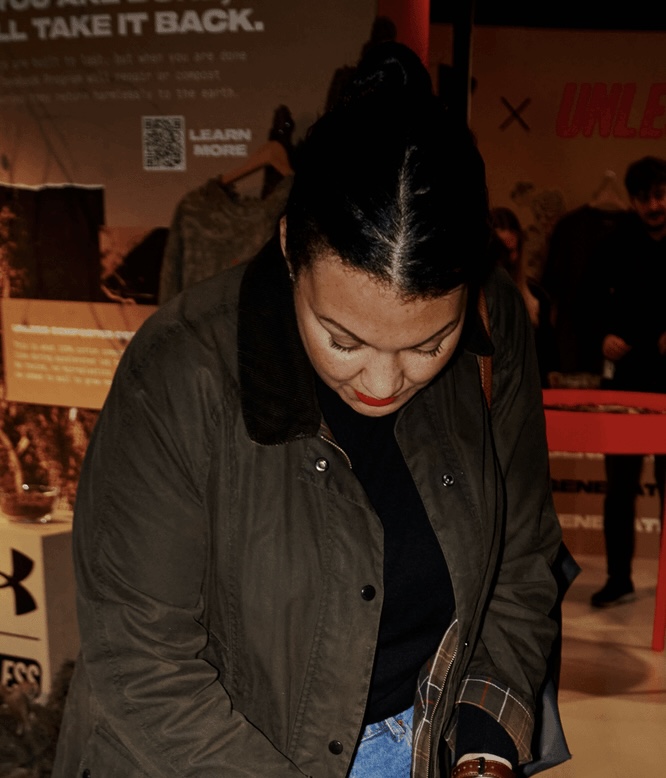Nike Earnings Beat as Hill’s Reset Gains Traction
.png)
Nike has finally given investors a reason to exhale. Back in October 2024, I argued that Nike’s fixation on DTC and frayed ties with retailers had dulled its edge with core runners. A year later, many of those pressure points have become the first levers in Hill’s reset, restoring wholesale channels, clearing aged stock and reviving sport-first storytelling.
The sportswear giant’s most recent quarter delivered revenue ahead of analyst forecasts and offered the first tangible signs that chief executive Elliott Hill’s turnaround programme is gaining traction. The relief was reflected in after-hours trading as the share price rose 0.9 per cent, though it remains down 7.8 per cent year-to-date, according to Bloomberg.
Executives warned the recovery was still a way off. Nike now expects tariffs to cost it about $1.5 billion this year, compared with the $1 billion expected earlier.
"We're also realistic that we are turning our business around in the face of a cautious consumer tariffs uncertainty and teams that are still settling into this sports offense," Hill said. Nike still had "work ahead to get all sports, geographies, and channels on a similar path."
The improvement owes less to buoyant demand than to a shift in how the company now runs itself.
Hill, who took the top job earlier this year after long stints in Nike’s operating divisions, moved swiftly to streamline layers of management, clear out aged inventory that had been clogging warehouses and mend frayed ties with wholesale partners.
Shelves at retailers such as Foot Locker once again carry key performance footwear, and Nike has re-established its own storefront on Amazon’s US site in 2025, a striking reversal for a company that only recently championed direct-to-consumer purity. The return, after a six-year hiatus, is being phased in product-line by product-line, but core running, training and basketball items are already available from Nike’s official Amazon store.
That pragmatic channel recalibration helped push wholesale revenue up 5 per cent (currency-neutral) to US $ 6.8 billion, helping stabilise sales in North America, still Nike’s largest market. It also reflects a willingness under Hill to trade a measure of exclusivity for reach and replenished cash-flow, a stance welcomed by analysts who had criticised the previous regime’s retreat from long-standing retail partners.
Margins, however, remain under strain. EVP and CFO Matt Friend warned that about US $ 1 billion in extra tariff-related costs would continue to weigh on gross margin, while the wholesale mix reduces pricing power.
“I’m encouraged by the momentum we generated in the quarter, but progress will not be linear as dimensions of our business recover on different timelines,” said Friend. “While we navigate several external headwinds, our teams are focused on executing against what we can control.”
An in-house creative hub, Icon Studios Shanghai, launched in April 2025 to produce “China-right” content for Tmall, Douyin and livestream commerce. We reported at the time that the move marked Nike’s first genuine decentralisation of brand operations, a shift away from global-first creative to locally led storytelling designed to rebuild relevance in the region.
A return to sport and to its own voice
The operational reset coincides with a fresh creative push.
In September 2025 Nike launched “Why Do It?”, a global campaign that re-introduces the brand’s most famous line, “Just Do It,” to a new generation of athletes.
The new platform reframes greatness as “a choice, not an outcome”, positioning the act of starting, showing up and persevering as the core of sport.
Fronted by Carlos Alcaraz, Caitlin Clark, LeBron James, Rayssa Leal, Qinwen Zheng and others, the cinematic anthem speaks to younger athletes who often cite social pressure and fear of failure as barriers to participation.
Brand strategists view the campaign as a deliberate return to Nike’s performance-first storytelling, aligning emotionally with Hill’s product-back-to-sport strategy.
Nike has not disclosed any sales impact from the campaign, but analysts see it as evidence the company still knows how to wield narrative to reinforce its brand aura, a cultural edge that helped build the Swoosh into a global icon in the first place.
The next test: consistency
For Hill, the question now is whether these operational and creative adjustments can compound into a truly global recovery: margin repair in the US and Europe, renewed traction in China and a viable plan for the under-performing lifestyle business.
Friend has cautioned that progress will not be linear; much still hinges on macro-economics, tariff costs and consumer sentiment in discretionary spending.
Investors have rewarded the company for clearing a low bar
Nike’s shares may have ticked up after the earnings beat, but the market wants proof of sustained mid-single-digit growth and margin repair rather than one quarter of relief. The coming months will reveal whether Hill’s back-to-basics playbook, performance product, wholesale diplomacy, disciplined inventory and a revived brand voice, can move the company from “stop the bleeding” to a credible new phase of global expansion.
In October 2024 we published “Here’s Nike’s Big Problem & How the C-Suite Can Rebuild the Swoosh”, identifying weaknesses in Nike’s DTC strategy, slumping stock and its loss of running-category credibility to Hoka, ASICS and On Running.This quarter’s results suggest the company is finally beginning to address many of those issues, but the recovery is still in its early innings.





.webp)
%20(10).webp)

.webp)

